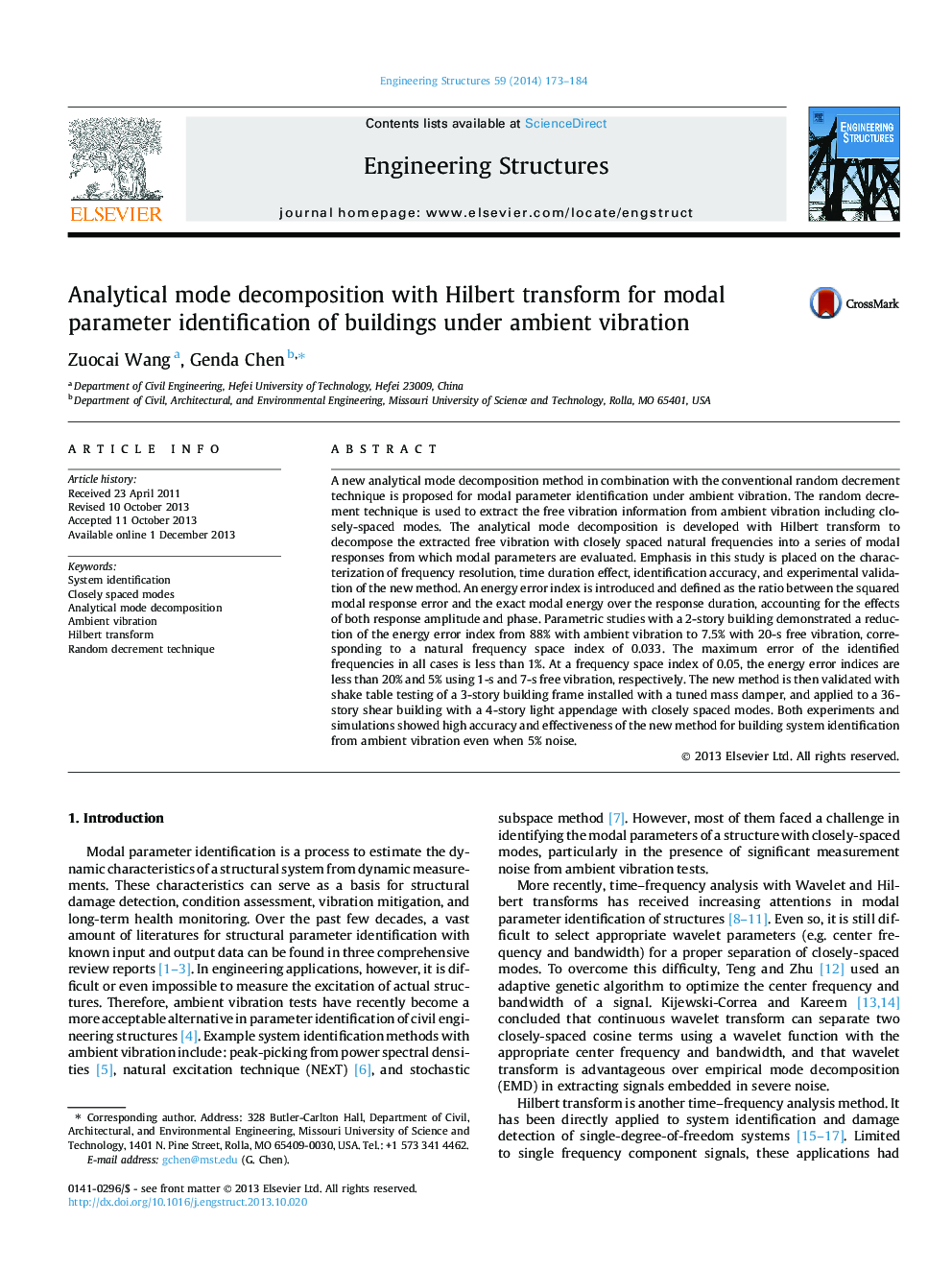| Article ID | Journal | Published Year | Pages | File Type |
|---|---|---|---|---|
| 6740830 | Engineering Structures | 2014 | 12 Pages |
Abstract
A new analytical mode decomposition method in combination with the conventional random decrement technique is proposed for modal parameter identification under ambient vibration. The random decrement technique is used to extract the free vibration information from ambient vibration including closely-spaced modes. The analytical mode decomposition is developed with Hilbert transform to decompose the extracted free vibration with closely spaced natural frequencies into a series of modal responses from which modal parameters are evaluated. Emphasis in this study is placed on the characterization of frequency resolution, time duration effect, identification accuracy, and experimental validation of the new method. An energy error index is introduced and defined as the ratio between the squared modal response error and the exact modal energy over the response duration, accounting for the effects of both response amplitude and phase. Parametric studies with a 2-story building demonstrated a reduction of the energy error index from 88% with ambient vibration to 7.5% with 20-s free vibration, corresponding to a natural frequency space index of 0.033. The maximum error of the identified frequencies in all cases is less than 1%. At a frequency space index of 0.05, the energy error indices are less than 20% and 5% using 1-s and 7-s free vibration, respectively. The new method is then validated with shake table testing of a 3-story building frame installed with a tuned mass damper, and applied to a 36-story shear building with a 4-story light appendage with closely spaced modes. Both experiments and simulations showed high accuracy and effectiveness of the new method for building system identification from ambient vibration even when 5% noise.
Keywords
Related Topics
Physical Sciences and Engineering
Earth and Planetary Sciences
Geotechnical Engineering and Engineering Geology
Authors
Zuocai Wang, Genda Chen,
